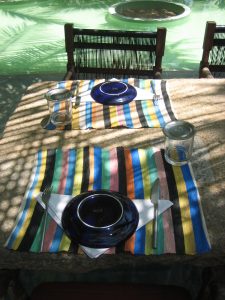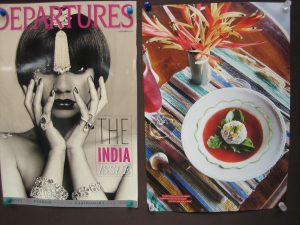ART D'ECO, who has been collaborating with the Crafts Organisation Khamir for 4 years has been invited to run workshops on recycling and develop products with the local craftsmen out of the ever-increasing waste.
KHAMIR was founded in the aftermath of the 2001 earthquake, efforts to rebuild Kachchh fueled collaboration and turned local energy toward improving livelihoods and empower the creative industries in Kutch, Gujarat. The newly built Khamir Crafts Resource Center is located 10 km from Bhuj, the capital of the desert. the center is a complex made out of mud, as traditionally done in Gujarat (for climatic reasons) combined with traditional carpentry work .
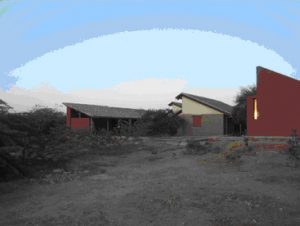
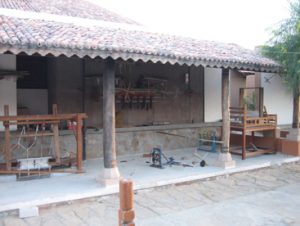

Diary: Day 1 : exploring the sources of wastes in the villages
Adrakpur is a new village built after the earthquake of 2001. it is a dyers and block printers village whose population is entirely re-settled. the change in livelihood has brought degradation of the environment and quality of life of the locals.Testimonies today were such as: “ before there was only organic wastes and the farmers would come to buy our organic waste to feed their cattle. today, our waste is made of so much plastic, and everything is mixed so nobody is interested in our wastes. there is no municipal collect. the plastic bags and other food packaging are flying around in nature” or “last week, a dead cow had her stomach opened and we found a few kilos of plastic bags inside!”
So we have asked rag pickers to collect the wastes generated by households .we also went to a few other villages meeting with weavers, leather workers and we asked for the wastes of their work activities. the good news is that : they entirely re-use their waste. their production is nearly “ zero waste”.
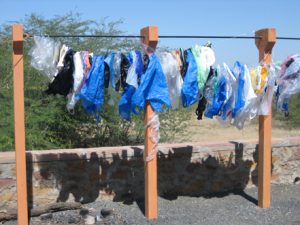
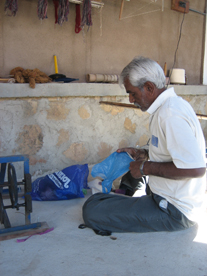
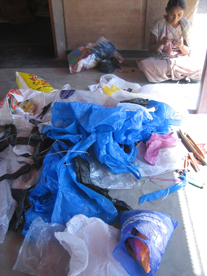
Day 2: sorting out the waste and exploring design ideas
After sorting out the different qualities of plastic, they are washed, cut out into stripes, rolled on a handloom shuttle and woven on a nylon wrap.
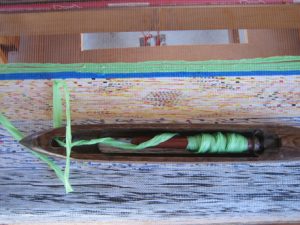
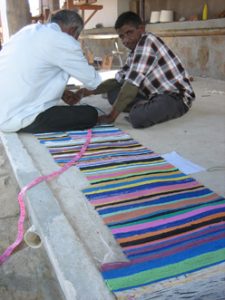
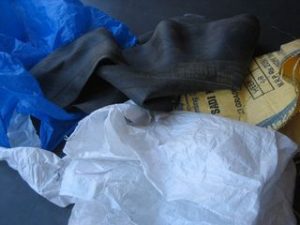
Day 3 and 4 : Exiting days making samples with our resources
Cement bags and plastic bags are the biggest waste here. so we look for solutions: Bright embroidery with wool is made on cement bags. A foot mat is stitched using cement bags, car inner tube (on the floor side) and plastic bags The weavers have finished their first pieces of woven plastic bags. the good thing is that our creations are re-using lots of trashed materials. from there, a big system of collect can be organized in the city of Bhuj and in the villages. The Muslim women of a slum in Bhuj had already developed the embroidery on the cement bags. I am happy to further developed the designs and shapes , so that their articles embellished with their skills can find a market.The Weaver, doesn’t have to invest in expensive raw material (wool, silk) , the only upfront cost is has is: the nylon for the warp. the used plastic bags are abundant and more ideas tomorrow .

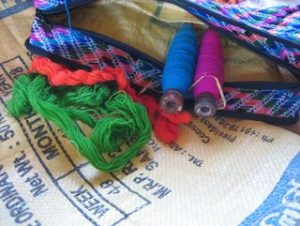
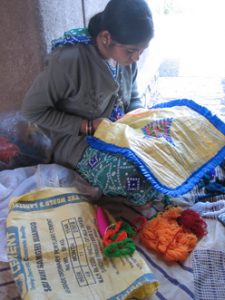
Days 5 and 6: here comes our first small collection of.embroidered cement bags.
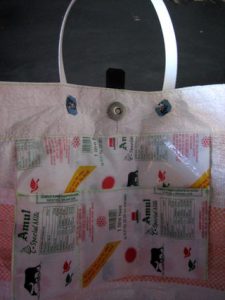
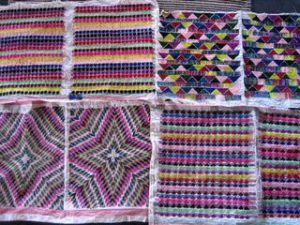
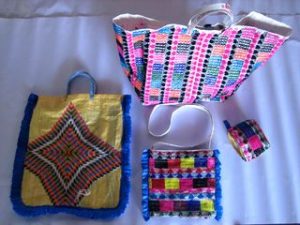
Day 7: few amazing pieces of work are ready....
A bathroom mat is made with plastic bags cut and stitched narrowly on a cement bag. floor facing part: with car inner tube to avoid the mat to slip away. Shopping bag with woven plastic bags. inside pocket in food packaging. handles are made of the straps usually used for sealing parcels.Garden cushion in the same material.Bags of different shapes for different uses ,decorated with very bright wools. typically from Kutchch’s decorative tradition. One can see the variety of embroidery and color combination on the raw ready material. The articles are 100% recycled. the inside pocket is made of the milk poach discarded by the thousands everyday (as used to make the national beverage: the Chai) . handles are made of the straps usually used for sealing parcels worldwide. after trying the weaving of the plastic bags, we try the braiding and tying.A woman make t he first line of a curtain, inserting bicolor plastic flowers in the braid.
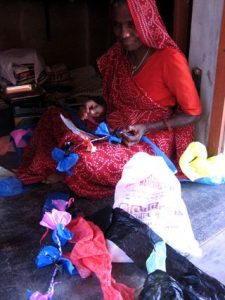
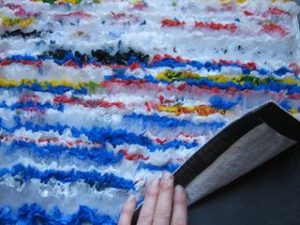
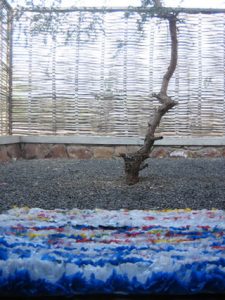
Day 9, the last : Open house at the Crafts Resource Center
We had invited all the craftsmen who had given their wastes and many NGO’s from the area to our open house to view our product development. To my great surprise people did make it to see what came out of their waste. The response was very positive.As we had items in urban wastes : embroidered cement bags, woven plastic bags or plastic bags stitched and braided and we had artisan’s wastes : damaged weave , warp left over wool , embroidery faulty models .The most successful were all the articles made out of plastic bags.As everybody agrees that they are abundant and a real nuisance for the environment.A group of women , who go door to door to collect the household refuse in Bhuj daily came. they had sold us the plastic to work on our samples. they were very empowered by what they saw. “how something dirty and disposed becomes a beautiful article with an added aesthetic and financial value....”Now they wish to set up a bigger unit with a little chain production to systematize the collect, the proper washing and drying of the plastic bags as well as the cutting out and weaving of them.This way, their collecting job of the morning could be rewarded by valorizing ( more pleasant and creative ) the waste in the afternoon.
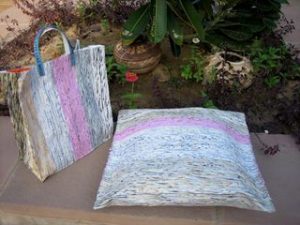
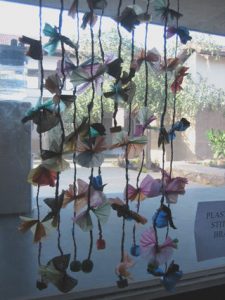
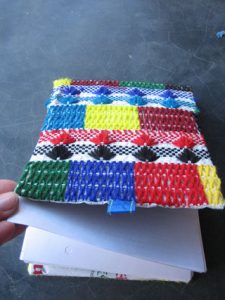
so this is it....
....after 10 days of intense labor from everyone in the project, we have made 21 products 100% RECYCLED . and above all, everyone involved in the project or visiting our exhibition has now a new way to look at waste: it can have a greater value and can be beautified. so... don’t you dare throwing your milk poach through your window every morning !!!!!!!!!!
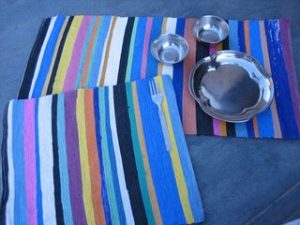
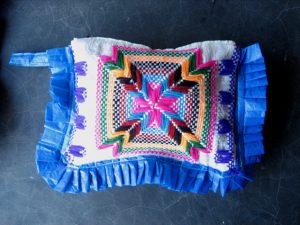
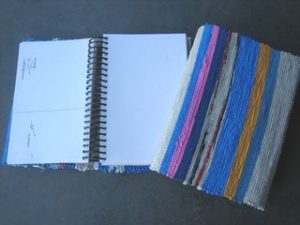
Success story ! eco- design helps local communities and looks gorgeous in Five star eco-resort...
The story is too good NOT to be told ..........Later in 2009, I was invited to do an Artist residency at the DUNE eco village near Pondicherry , Tamil Nadu. DUNE was looking for eco friendly placemats for their 2 restaurants....the bridge was made. An order was placed with the people of KHAMIR. now these gorgeous colorful placemats are the highlight of the dinning tables at DUNE and the artisans in Bhuj have a perfect “window “ for their woven articles as well as an income. The placemats are featured in international food magazines. The artisans at Khamir said : “The order of 400 hand woven plastic table mats has helped us in many ways. Apart from addressing environmental concerns. It provided good rates of waste plastic to the women who collected it from garbage dumps. The order also helped to generated employment for the weavers who cleaned, graded and wove the plastic into beautiful plastic mats”. Pankaj, the project director adds "At KHAMIR, it helped us to organize production process - from sourcing of plastic waste, cleaning and grading the same, weaving the mats and stitching the borders. KHAMIR is planning to take this process further”.Indeed, in 2017, the woven plastic have been applied to other items such as bags and a complete production line is now running http://www.khamir.org/crafts/recycled-plastic-weaving

